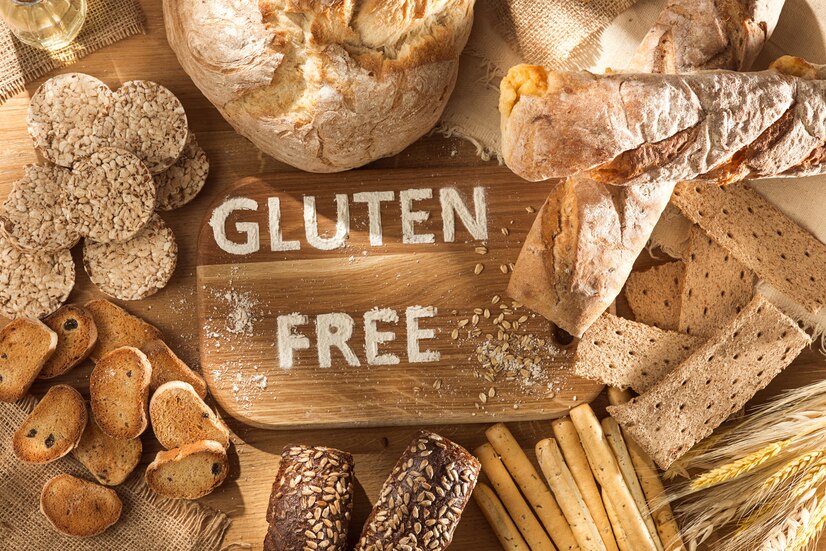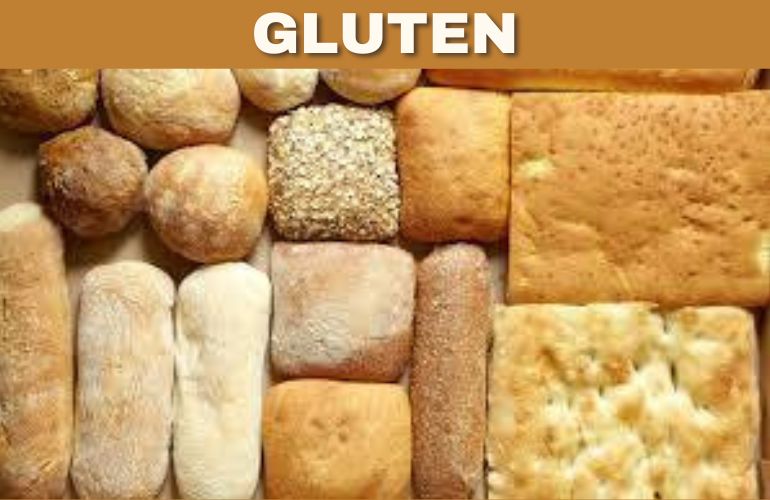Introduction to Gluten
Gluten, a protein found in wheat, barley, and rye, has become a household name for health-conscious individuals and those with specific dietary restrictions. This complex protein plays a crucial role in giving bread its fluffy texture but has also been identified as a culprit in various health conditions. Understanding gluten’s nature and its impact on health is essential for navigating dietary choices and maintaining well-being.
Understanding Gluten Sensitivity and Intolerance

The spectrum of gluten-related disorders includes celiac disease, non-celiac gluten sensitivity, and wheat allergy, each with its own distinct characteristics and required management strategies. Celiac disease, an autoimmune condition, requires a strict gluten-free diet as a lifelong commitment, while non-celiac gluten sensitivity presents similar symptoms without the autoimmune response. A wheat allergy, on the other hand, involves an allergic reaction to wheat proteins, not just gluten.
The Science Behind Gluten
Gluten’s interaction with the body, particularly for those with sensitivities or intolerances, can lead to a range of symptoms, from digestive distress to neurological issues. The protein’s structure and its breakdown (or lack thereof) in the digestive system are key areas of scientific study, shedding light on why some individuals cannot tolerate gluten.
Gluten in the Diet: Pros and Cons
While gluten-containing foods are staples in many diets, providing essential nutrients and benefits, the debate around gluten’s health impacts has led to a surge in gluten-free diets. This section explores the nutritional considerations of both gluten-containing and gluten-free foods, along with the potential health benefits and risks associated with eliminating gluten from the diet.
Identifying Gluten in Food Labels
Navigating food labels to identify gluten can be challenging due to various labeling laws and the presence of hidden gluten in processed foods. This section provides practical tips for individuals needing to avoid gluten, emphasizing the importance of awareness and education in managing a gluten-free diet.
Gluten-Free Diet: Basics and Benefits

Transitioning to a gluten-free diet can be daunting,,, but comes with potential health benefits for those with gluten-related disorders. This section covers the essentials of adopting a gluten-free lifestyle, including the initial steps, expected health improvements, and the challenges faced by individuals on this diet.
Gluten in Culinary Arts
Gluten’s role in culinary applications, particularly in baking, is undeniable. However, the rise of gluten-free diets has led to innovative alternatives that allow for gluten-free cooking without compromising on taste or texture. This section explores gluten’s culinary importance and how to substitute it effectively in recipes.
The Economic Impact of Gluten-Free Products
The gluten-free market has seen exponential growth, reflecting a significant shift in consumer behavior and dietary needs. This section examines the economic aspects of this trend, including the cost implications for consumers and the food industry’s response to the increasing demand for gluten-free products.
Gluten and Mental Health

Emerging research suggests a link between gluten and mental health issues in sensitive individuals, leading to discussions about the broader impacts of gluten beyond digestive health. This section delves into the evidence and personal experiences relating to gluten’s effect on mental well-being.
Gluten-Free Living: Tips and Tricks
Living gluten-free involves more than just diet adjustments; it’s a lifestyle change that requires careful planning and knowledge. This section offers advice for managing a gluten-free diet, from dining out safely to preparing gluten-free meals at home.
The Future of Gluten
As research advances and consumer demand shifts, the future of gluten-free products is set to evolve. This section looks ahead to potential developments in gluten-free alternatives, scientific research, and awareness campaigns aimed at improving the lives of those affected by gluten-related disorders.
Gluten
Raising awareness and understanding of gluten is vital for public health, especially as gluten-related disorders become more widely recognized. This section emphasizes the importance of education and advocacy in fostering a more inclusive and informed society regarding dietary needs.
Conclusion
Understanding gluten is crucial in today’s health-conscious world. Whether managing a gluten-related disorder or simply aiming for a healthier diet, knowledge is power. This comprehensive exploration of gluten aims to enlighten and empower readers, highlighting the importance of informed dietary choices.
FAQs
1. What is gluten and where is it found?
Gluten is a group of proteins found in certain grains, such as wheat, barley, and rye. It gives bread and other baked goods elasticity and a chewy texture. Gluten is present in a wide range of food products, including pasta, bread, cereals, and many processed foods.
2. Can gluten cause health problems?
Yes, for certain individuals, gluten can cause health problems. These include celiac disease, an autoimmune disorder where gluten damages the small intestine, non-celiac gluten sensitivity, which involves a less clear-cut reaction to gluten without the autoimmune component, and wheat allergy, which is an allergic reaction to wheat but not specifically gluten.
3. How do I know if I should avoid gluten?
If you experience symptoms such as digestive discomfort, bloating, diarrhea, constipation, headaches, fatigue, or skin rashes after consuming gluten-containing foods, you might have a sensitivity to gluten or a more serious condition like celiac disease. It’s essential to consult with a healthcare provider for proper diagnosis and dietary advice.
4. What foods are safe to eat on a gluten-free diet?
Foods that are naturally gluten-free include fruits, vegetables, meat, poultry, fish, seafood, dairy, beans, legumes, and most nuts. Grains and starches like rice, corn, quinoa, potatoes, and gluten-free flours (e.g., almond flour, coconut flour) are also safe for individuals on a gluten-free diet.
5. Are oats gluten-free?
Pure oats are gluten-free and safe for most people with gluten intolerance. However, oats are often contaminated with gluten because they are processed in facilities that also handle wheat, barley, or rye. Look for oats specifically labeled as gluten-free to avoid cross-contamination.
6. Is it necessary to avoid gluten if I don’t have celiac disease or gluten sensitivity?
For the general population without celiac disease or gluten sensitivity, there is no scientific evidence to suggest that following a gluten-free diet has any significant health benefits. However, some people may choose to avoid gluten for personal health reasons or dietary preferences.
7. Can a gluten-free diet be unhealthy?
A gluten-free diet can be healthy if it includes a variety of naturally gluten-free foods like fruits, vegetables, lean proteins, and whole grains. However, relying heavily on processed gluten-free products, which can be high in sugar, fat, and calories while lacking essential nutrients, may lead to an unbalanced diet.





